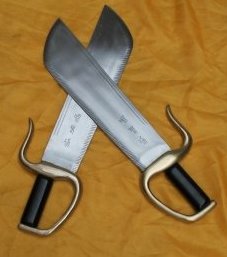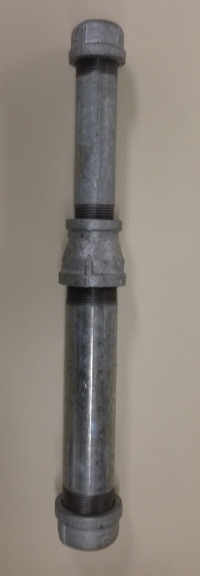
How to Build Your Hitting Power
February 03, 2013
Duke: You know all there is to know about fighting, so there’s no sense us going down that same old road again. To beat this guy, you need speed – you don’t have it. And your knees can’t take the pounding, so hard running is out. And you got arthritis in your neck, and you’ve got calcium deposits on most of your joints, so sparring is out.
Paulie: I had that problem.
Duke: So, what we’ll be calling on is good ol’ fashion blunt force trauma. Horsepower. Heavy-duty, cast-iron, piledriving punches that will have to hurt so much they’ll rattle his ancestors. Every time you hit him with a shot, it’s gotta feel like he tried kissing the express train. Yeah! Let’s start building some hurtin’ bombs!
Rocky Balboa , 2006
When all is said and done, you have to learn how to hit hard.
Your amazing Chi Sao isn’t going to be much good if you don’t learn how to damage your opponent when you get the chance. In Wing Chun, we have a whole range of techniques and drills to develop this capacity.
I’ll start with one of the basic techniques to build your wrists. Your wrists are one of the weak links in the chain that leads from your contact surface (the last two knuckles of your fist) to the ground via the heel of the foot on the side you are “sitting” on.
 Wing Chun trains two weapons: the Luk Dim Boon Kwan, or “six and one half point pole” and the Baat Jam Do or eight-cut knives (aka Butterfly Swords).
Wing Chun trains two weapons: the Luk Dim Boon Kwan, or “six and one half point pole” and the Baat Jam Do or eight-cut knives (aka Butterfly Swords).
In an article (apparently no longer available on the internet!) by my teacher Greg LeBlanc and his Sifu Gary Lam, they make the point is made that the structure of the Knife form is “significantly different” from the pole form. The pole “relies heavily on the development and use of internal power and therefore the bodies correct structural alignment” while the knives are “almost entirely dependent on the sharpened edge of the blade for power.” The knives rely not on power but on position and technique.
However, the earliest training you receive for the knives is in using the Heavy Baat Jam Do. In Chinese martial arts, it is traditional to train with a bigger, heavier version of your weapon. So when you use your actual weapon, it is lighter in your hands and the various angles and radius turns available to you are all smaller and easier.
In the Gary Lam tradition, we perform all of the basic actions for Knife training described in the article above using the Heavy Baat Jam Do:
- Qi-Stabbing
- Jam-Chopping
- Gan-Block and cut
- Kwan-Double block
- Bon-Deflection
- Biu-Line deflection forward
- Jaam-Stopping
- Tan and Qi-Deflect out and stab
 How to build a heavy Baat Jam Do.
How to build a heavy Baat Jam Do.